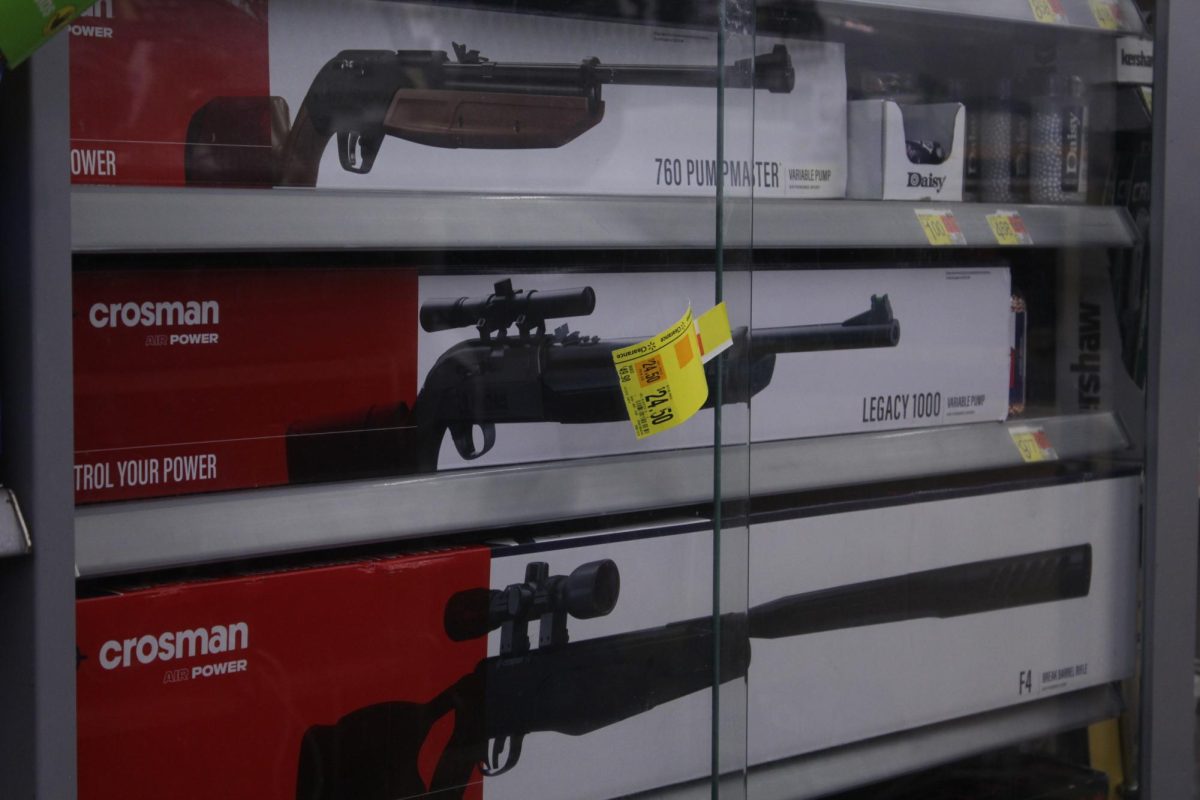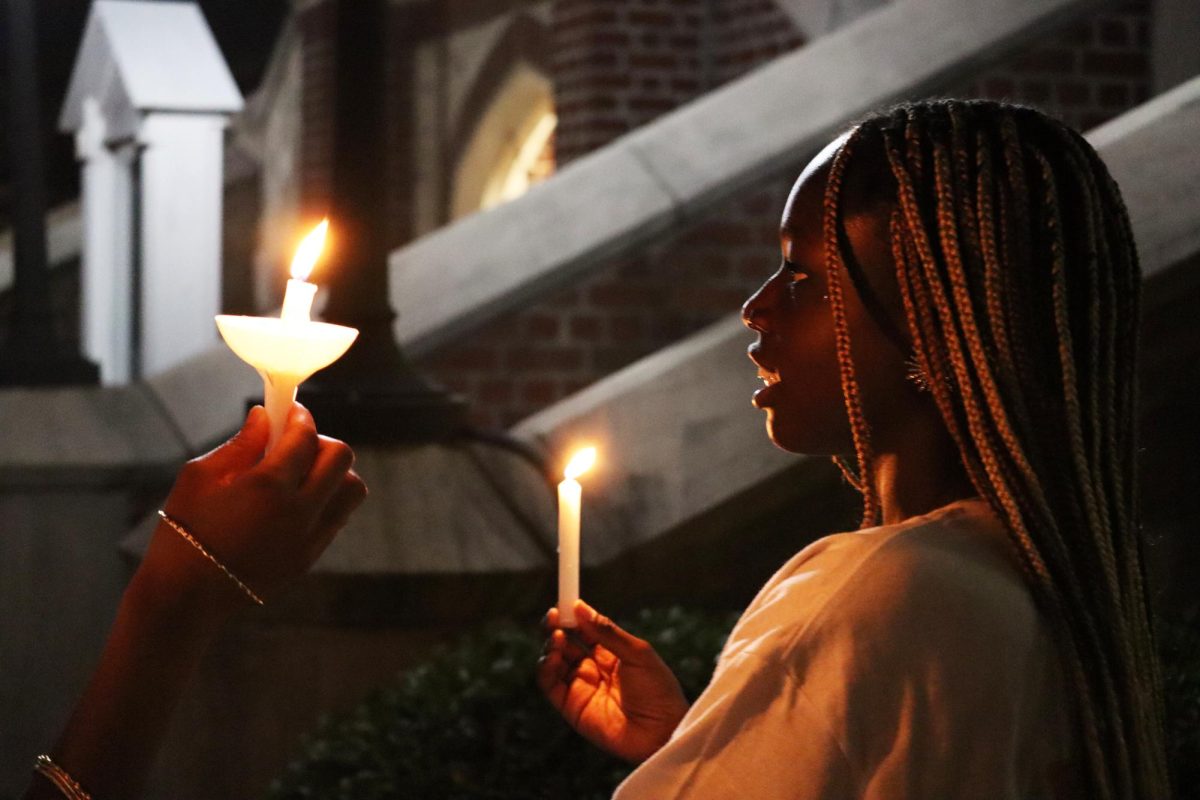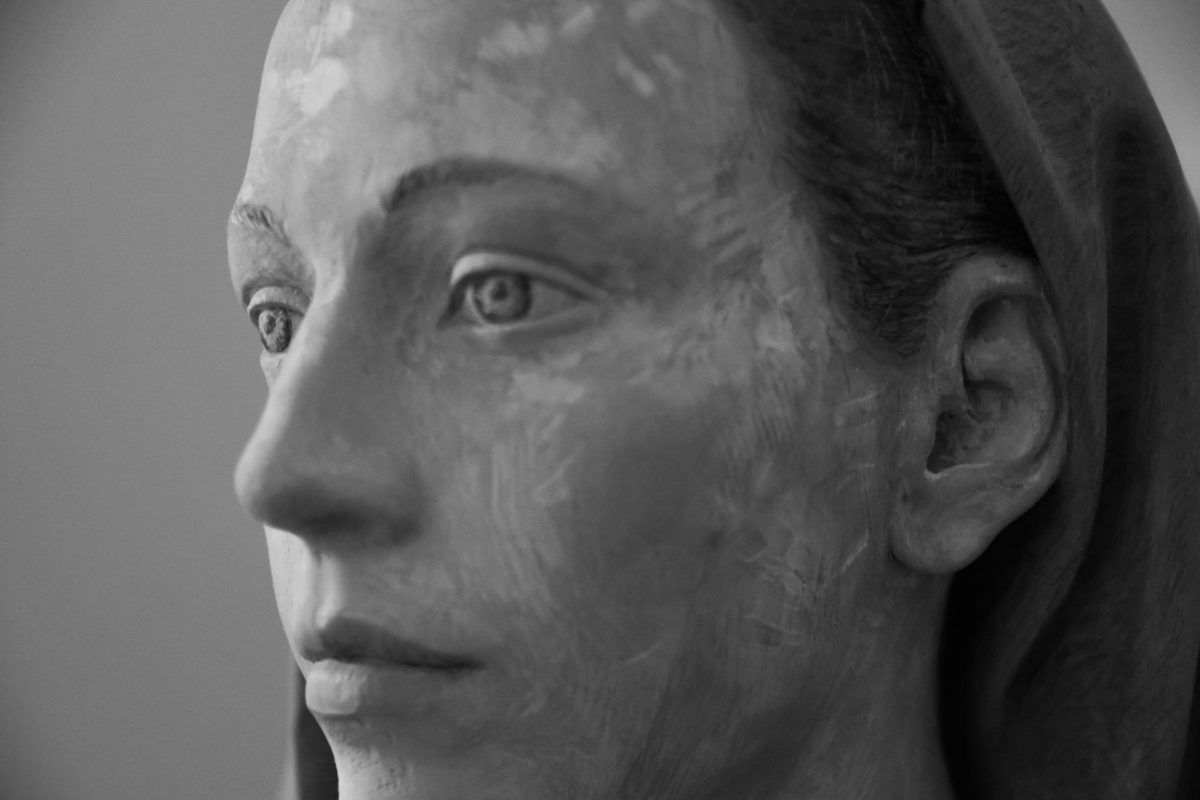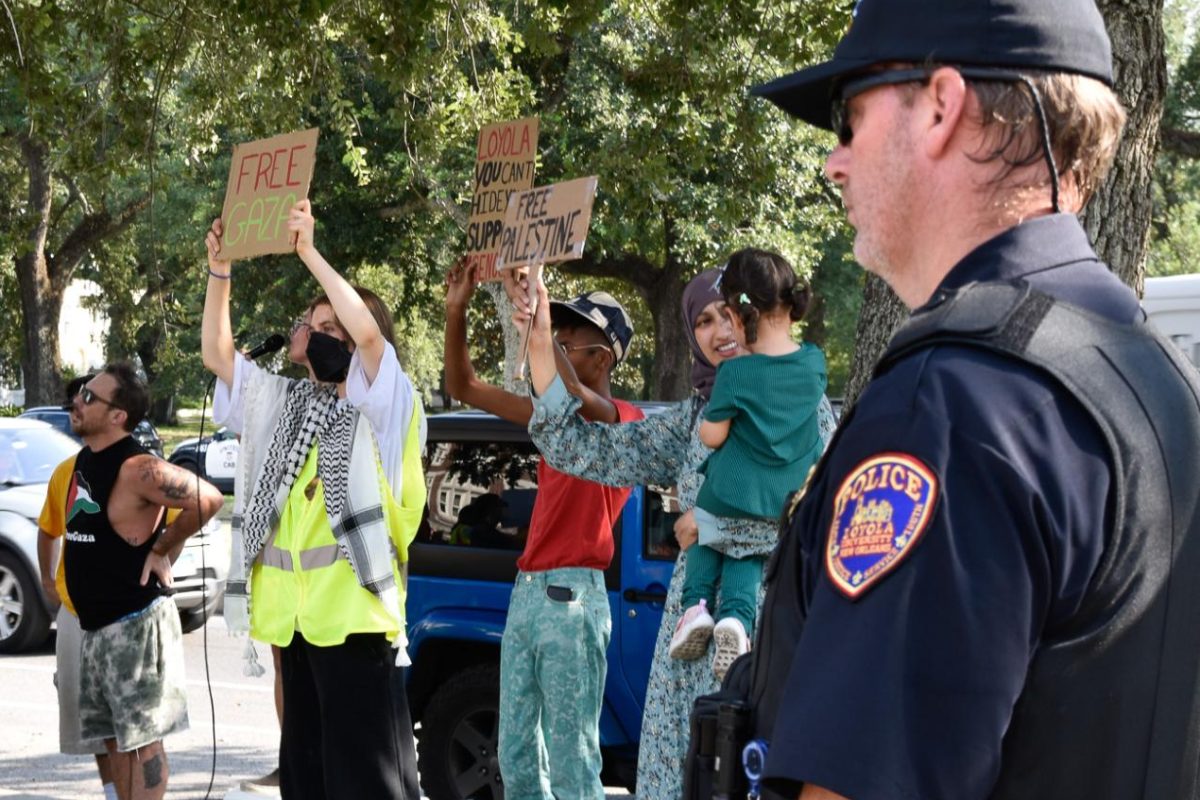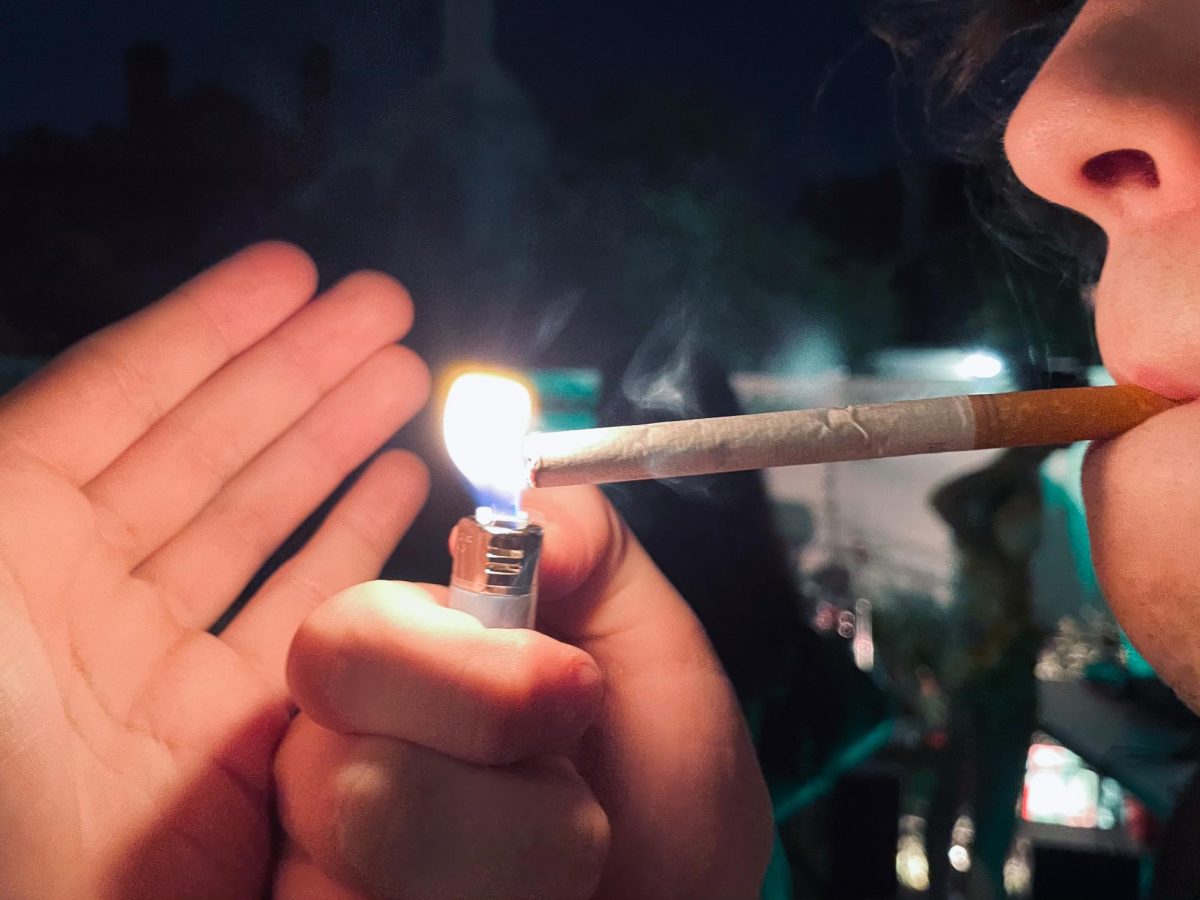The Rev. Rodney Kissinger, S.J., now stationed at the Ignatius residence on the West Bank, recalled playing on Loyola’s last football team in 1939. Kissinger is 88 years old.
Attending Loyola for him was a very special experience.
“I’m a priest because of athletics. I was a Lutheran,” he said. “When I came to Loyola, I met the Jesuits and converted. If it weren’t for athletics, I never would have become a priest.”
Kissinger talked about what Loyola was like when he attended.
“When I was there, Bobet was an open practice field and towards Freret was the stadium,” he said. “On Freret itself was the field house and everything else.”
“The Loyola stadium wasn’t too bad. It had about 35 or 40 thousand seats and had a covered deck,” Kissinger said. “Generally the game was on a Friday night, because Tulane played on Saturday.”
Along with scholarships, athletes had free housing.
“They had a lot of guys on Marquette Place at a ranch house,” he added.
He transferred from Notre Dame, where he had played mostly on the freshman team. He was introduced with the words, “Apparently the weakest spot will be in the center of the line … with newcomer Rod Kissinger helping out in the pinches at the pivot post,” in the September 16, 1938, edition of The Maroon.
Kissinger, who went to Holy Cross High School in New Orleans left Notre Dame to play for coach Larry “Moon” Mullins, who played for Knute Rockne at Notre Dame.
“Mullins tried to bring some of the Notre Dame spirit with him,” Kissinger said. “He mixed up a little of everything.”
Aside from Mullins, there were other reasons to transfer to Loyola.
“There were some great players before I got here” he said. “The level of competition was very good, but it was a different league from Notre Dame really.”
Kissinger’s coach at Holy Cross High School in New Orleans was, incidentally, Rockne’s last quarterback.
Listed as being five feet, 10 inches tall and weighing 175 pounds, Kissinger was the starting center in the opening game against Spring Hill, which the “Wolves” won, 13-0.
“We had a rivalry with Spring Hill especially (among the Dixie conference teams),” Kissinger said.
He also played as a substitute in 14-12 win over St. Mary’s from Texas.
The Wolfpack lost most of its games in 1938, but Kissinger played in many games that year.
One senior wrote in a letter to The Maroon at the end of the season, “There has been no real support of the squad by the students.”
Kissinger diagreed saying, “There was great spirit at the school. In a way the students looked up to the athletes.”
Kissinger moved to guard (reported 9/22/39) after gaining 10 lbs. The move seems to have been to make room for sophomore centers moving onto the team. Freshmen then had a separate team, called the Wolfpups.
He was included on first team for the 1939 season. Kissinger started at right tackle against Louisiana College. He was listed as 195 pounds then and his counterpart reportedly weighed 210.
Despite weight disadvantage at tackle and most other positions, the Wolfpack won the game, but Kissinger moved back to guard.
“Nothing was hard after going to Notre Dame,” Kissinger said. “I had scrimmaged against the (Loyola) line coach when we went to Notre Dame together.”
His most memorable game was a 20-0 loss to LSU.
“I played center against LSU in ’39. It was a very good game,” he said. “I knew a lot of those guys – I had been recruited by LSU.”
He did not play again because of “a leg injury,” he suffered when the Wolves beat Birmingham Southern, 7-6 at ‘Pack stadium.
“I had a broken thigh bone, and at first the x-rays didn’t show anything,” Kissinger said. “I had to have the whole bone scraped.”
On Nov. 10, Loyola beat Southwestern Louisiana Institute, 20-18, to gain sole possession of the Dixie conference lead.
In the next week’s edition, concerns over “suspending” the football program were dismissed by the faculty athletic adviser as ‘just another of those silly rumors originated by someone who doesn’t know what it’s all about.’
“Moon was very great on using psychology. He didn’t think they (SLI) were any good. We got off the bus and dressed up, and we gave them the impression we didn’t warm up at all,” Kissinger said. “They got mad as hell, and we couldn’t beat them until the end of the game.”
After losing to Catholic, Loyola finally beat Spring Hill Nov. 23 to win the Dixie conference.
Kissinger apparently would not play again and the team’s last game on Dec. 1 was a 13-0 loss to Texas Tech.
“I was very impressed by them. Lubbock is very high altitude and that had an effect on us too. The state of Texas always had good teams,” Kissinger recalled.
Mullins chose not to renew his contract as coach and of course the fateful decision was made not to bring back the football team.
“They had a convocation and explained to everyone that the football team was costing $50,000 a year,” Kissinger said. “Most people understood the decision.”
According to Kissinger, Mullins later became Athletic Director at Marquette University and Kansas State.
The elimination of football, which was merely a financial decision, did little to directly hurt the athletic program at the time.
“They kept all the athletes that were in other sports,” said Kissinger, who ran track and played basketball. “We had a wonderful athletic program.”
“Leo Deutch was the basketball coach. We were very good. I wasn’t the first stringer but I played a lot,” he added.
Kissinger mentioned Tad Gormley, who trained Olympic boxers.
“Tad Gormley was the trainer and boxing and track head coach,” he said.
The basketball team would become very successful, winning a national championship in 1945.
“[The athletes] were well taken-care-of,” Kissinger said. “We had free room and board and tuition, and most of us had part time jobs on the side.”



